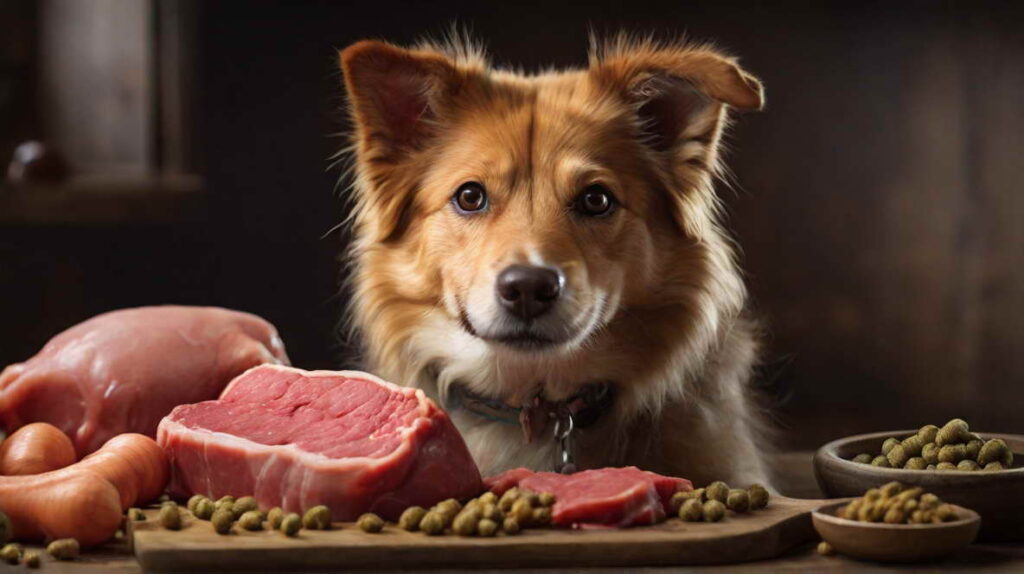
My Journey into Raw Feeding for Dogs
PETSIDI – Over the years, I’ve explored various dog food options, from commercial kibble to home-cooked meals. However, it wasn’t until I stumbled upon the concept of raw feeding that my perspective on canine nutrition truly shifted.
The Raw Diet Revelation
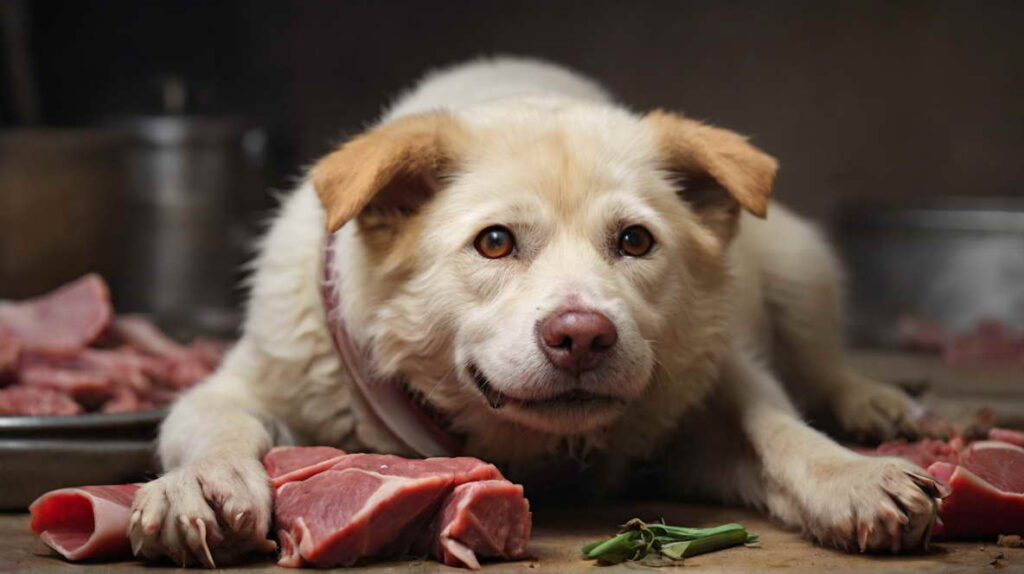
It all started when I noticed that my beloved pup, Max, was experiencing digestive issues and a dull coat despite being on a premium commercial dog food brand. Frustrated and concerned, I began researching alternative dietary options. That’s when I discovered the raw food movement for dogs, which advocates for feeding our canine companions a species-appropriate diet similar to what their wild ancestors consumed.
At first, the idea of feeding raw meat to my dog seemed counterintuitive. After all, we’ve been conditioned to believe that kibble is the safest and most convenient option. However, as I delved deeper into the raw feeding philosophy, the benefits became increasingly compelling.
The Benefits of Raw Feeding

- Improved Digestion: Unlike highly processed kibble, raw meat is easier for dogs to digest, allowing for better nutrient absorption and reducing the risk of gastrointestinal issues. The natural enzymes and probiotics found in raw meat aid in breaking down proteins and fats, promoting a healthier gut and reducing digestive problems like constipation, diarrhea, and flatulence.
- Shinier Coat: The high-quality proteins and fats found in raw meat contribute to a healthier skin and coat, giving your dog a vibrant, glossy appearance. The essential fatty acids, like omega-3 and omega-6, found in raw meats and organ meats nourish the skin from the inside out, promoting a soft, lustrous coat and reducing shedding and dryness.
- Cleaner Teeth: The act of chewing on raw meaty bones helps scrape away plaque and tartar, promoting better dental hygiene. The abrasive action of the bones acts as a natural toothbrush, removing buildup and reducing the risk of gum disease and tooth decay. Additionally, the enzymes in raw meat can help break down plaque.
- Smaller Stools: Raw diets typically result in smaller, less odorous stools, making cleanup a breeze. This is because dogs are able to absorb and utilize more nutrients from raw foods, leaving less waste behind. The stools are also firmer and easier to pick up, reducing the mess and odor.
- Increased Energy: The biologically appropriate nutrients found in raw meat can provide a boost in energy levels for your furry friend. Raw diets are rich in high-quality proteins and fats, which are easily digestible and provide sustained energy for an active lifestyle.
- Allergy Relief: Many dogs suffer from food allergies or intolerances, often related to the grains, fillers, and preservatives found in commercial kibble. By switching to a raw diet, you eliminate these potential allergens, which can alleviate symptoms like itchy skin, ear infections, and digestive upset.
- Weight Management: Raw diets are naturally lower in carbohydrates and higher in protein, which can aid in weight management and preventing obesity. The high moisture content in raw meats can also help dogs feel fuller for longer, reducing overeating.
- Better Dental Health: In addition to the cleaning action of raw meaty bones, the lack of carbohydrates in a raw diet means there is less sugar for oral bacteria to feed on, reducing the risk of dental issues like gum disease and tooth decay.
By providing a nutrient-dense, species-appropriate diet, raw feeding can address a wide range of health concerns and promote overall vitality in our canine companions. However, it’s essential to consult with a veterinarian and properly balance the diet to ensure your dog receives all the necessary nutrients.
Getting Started with Raw Feeding

Transitioning to a raw diet can seem daunting, but with proper guidance and preparation, it can be a rewarding experience for both you and your dog. Here are some steps to help you get started:
- Consult with a Veterinarian: While many vets are unfamiliar with raw feeding, it’s essential to discuss your plans with a professional to ensure your dog’s specific nutritional needs are met.
- Research and Plan: There are various raw feeding models, including prey model, BARF (Biologically Appropriate Raw Food), and commercial raw diets. Research the different approaches and decide which one aligns best with your preferences and lifestyle.
- Gradually Transition: Abruptly switching to a raw diet can cause digestive upset. Introduce raw foods slowly by mixing them with your dog’s current diet and gradually increasing the ratio over time.
- Balance Nutrients: A well-rounded raw diet should consist of muscle meat, organ meat, bones, and supplements to ensure your dog receives all the necessary nutrients.
- Proper Handling and Storage: Raw meat requires special handling and storage techniques to prevent bacterial contamination. Follow food safety guidelines, and invest in a dedicated refrigerator or freezer for your dog’s raw meals.
Raw Feeding Meal Plan Example
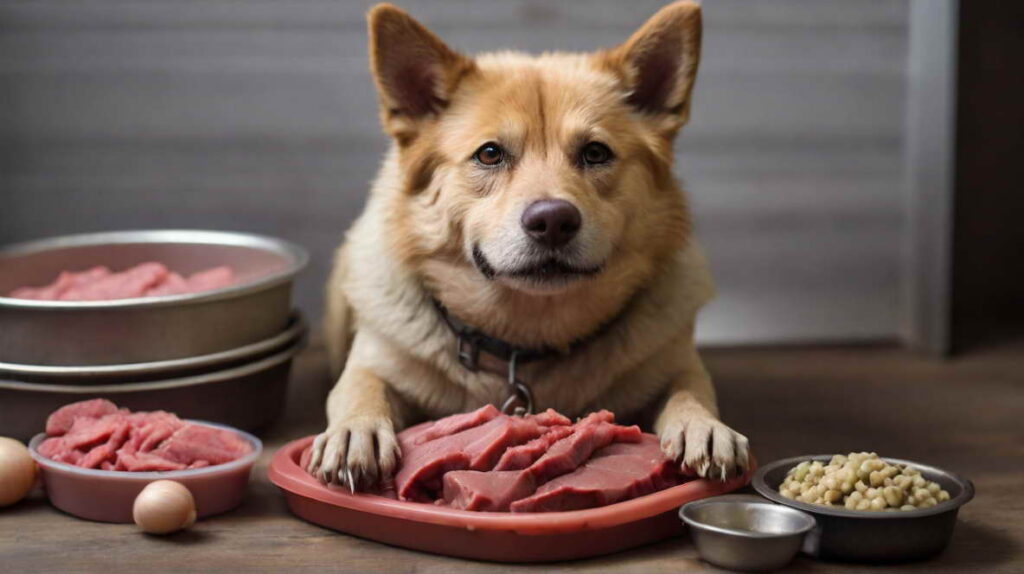
To give you an idea of what a typical raw feeding meal plan might look like, here’s an example:
| Meal Component | Percentage |
|---|---|
| Muscle Meat | 70% |
| Edible Bone | 10% |
| Liver | 5% |
| Other Organs | 5% |
| Supplements* | As needed |
*Supplements may include omega-3 fatty acids, vitamins, and minerals to ensure a balanced diet.
This breakdown can be adjusted based on your dog’s specific needs and preferences, but it provides a good starting point for a balanced raw diet.
Raw Feeding Myths Debunked
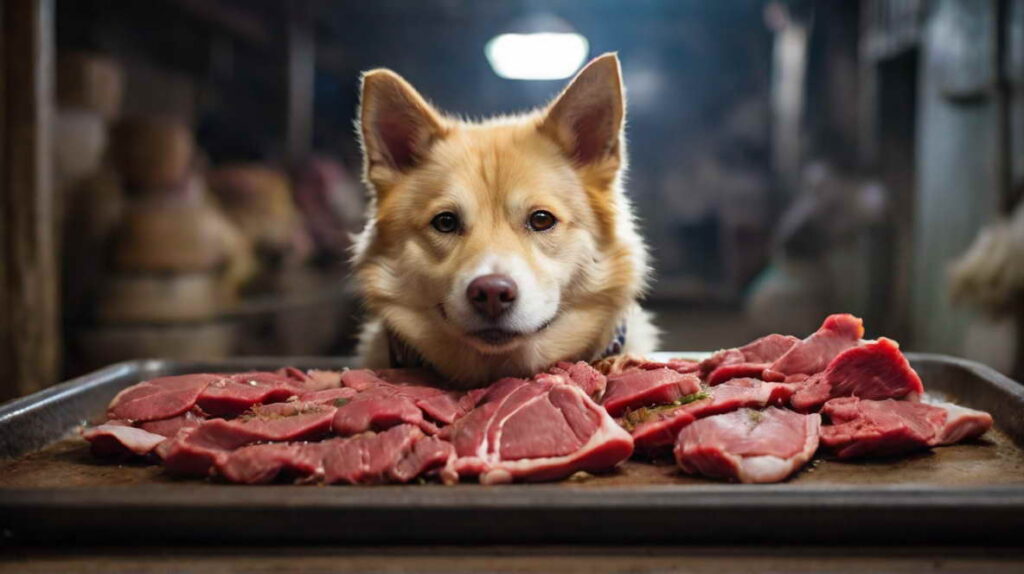
Despite its growing popularity, raw feeding is often met with skepticism and misconceptions. Here are some common myths debunked:
- Myth: Raw meat is unsafe and can make dogs sick. Reality: When handled and stored properly, raw meat is no more dangerous than the raw meat humans consume. In fact, dogs’ digestive systems are better equipped to handle bacteria found in raw meat.
- Myth: Raw diets are expensive and time-consuming. Reality: While there may be an initial investment in freezers and meal prep supplies, raw feeding can be cost-effective in the long run, especially if you source meat in bulk or use less expensive protein sources like green tripe.
- Myth: Raw bones are dangerous and can splinter. Reality: Raw bones that are appropriately sized and fed under supervision pose minimal risk. It’s the cooked bones that are prone to splintering and should be avoided.
- Myth: Raw diets lack essential nutrients. Reality: A well-planned raw diet that includes a variety of protein sources, organs, and supplements can provide all the necessary nutrients for a thriving and healthy dog.
Raw Feeding Success Stories

As I embarked on this raw feeding journey, I witnessed firsthand the transformative effects it had on Max’s health and well-being. His once dull coat became shiny and lustrous, his energy levels soared, and his digestive issues disappeared. But Max wasn’t the only one to benefit – many fellow dog owners in the raw feeding community have shared their own success stories.
From improved joint health and mobility in senior dogs to better weight management and allergy relief, the positive impacts of raw feeding are undeniable. These personal accounts and the wealth of scientific research on the topic have solidified my belief in the power of a species-appropriate raw diet for our canine companions.
Embracing the Raw Lifestyle
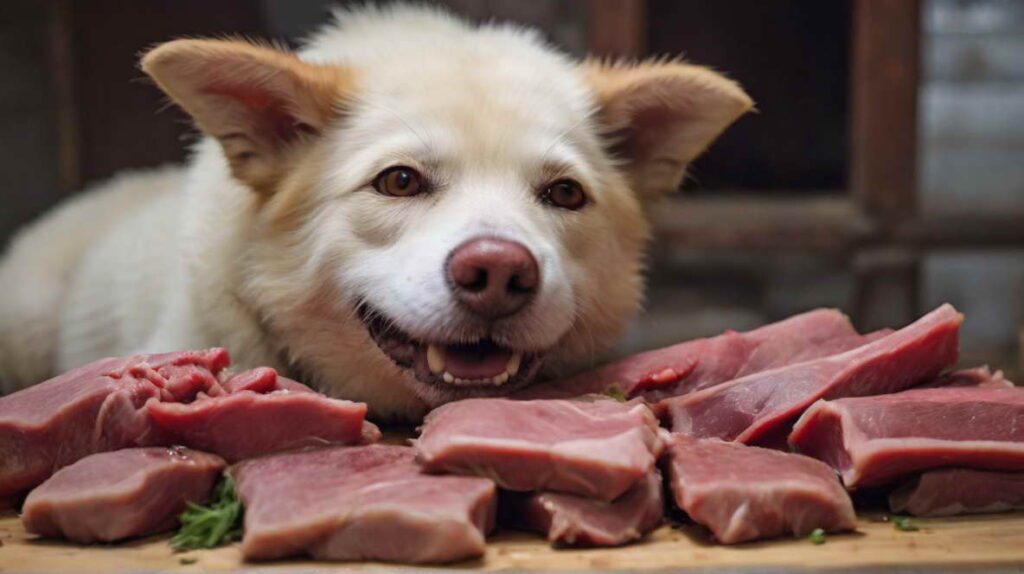
Transitioning to raw feeding has been a rewarding and eye-opening experience for me and Max. It has not only improved his physical health but also strengthened our bond as we’ve embraced a more natural and holistic approach to his nutrition.
While raw feeding may not be the right choice for every dog owner, I encourage you to keep an open mind and do your research. The raw food movement is gaining momentum, and more resources and support networks are becoming available every day.
Remember, at the heart of raw feeding lies a simple desire: to provide our beloved canine companions with the best possible nutrition for a happy, healthy, and vibrant life. Embrace the raw lifestyle, and witness the incredible transformation it can bring to your furry friend.

Leave a Reply